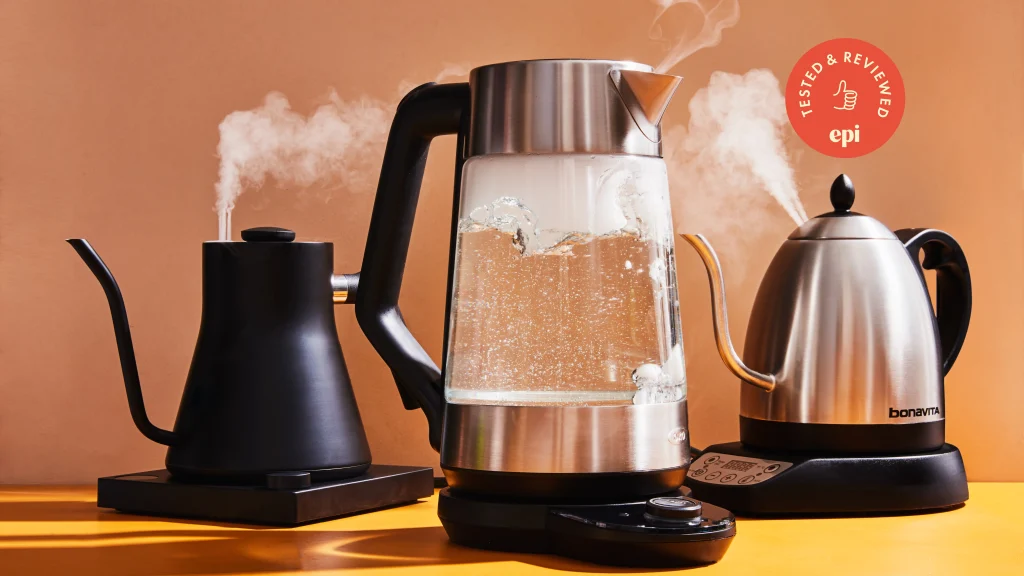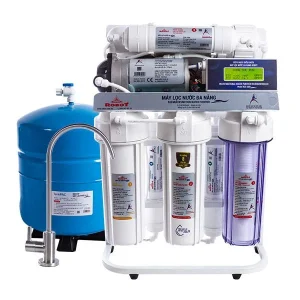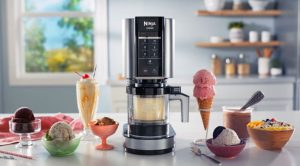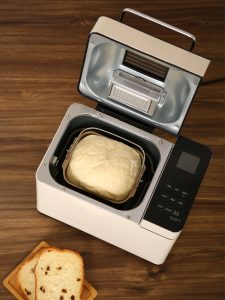Electric Kettle: What Is It? How It Works, Applications, and Safe Usage Tips

An electric kettle is a popular kitchen appliance designed for quickly boiling water. Known for its speed and convenience, the electric kettle has become an essential item in many households and offices. In this article, we will explore what an electric kettle is, how it works, its practical applications, and how to use it safely for optimal performance.
1. What Is an Electric Kettle?
An electric kettle is a small, electric-powered appliance used to heat water to boiling point quickly. Unlike traditional stovetop kettles, which require direct heat, electric kettles are powered by electricity and typically feature an automatic shut-off mechanism once the water reaches the desired temperature.
Common Types of Electric Kettles
- Standard Electric Kettles: These are the most common type, featuring a simple design with a heating element at the bottom that heats water efficiently.
- Glass Electric Kettles: Made from heat-resistant glass, these kettles allow you to watch the water boil, adding an aesthetic appeal to their functionality.
- Stainless Steel Electric Kettles: Durable and modern, these kettles are made from stainless steel and often feature a sleek design, with faster heating capabilities.
- Travel Electric Kettles: Smaller and portable, these kettles are designed for use while traveling or in spaces with limited counter space.
Benefits of Using an Electric Kettle
- Speed: Electric kettles heat water much faster than traditional stovetop methods.
- Convenience: With features like automatic shut-off and temperature control, electric kettles offer a hassle-free boiling experience.
- Energy Efficiency: Electric kettles are typically more energy-efficient compared to heating water on a stove.
- Safety: Most modern electric kettles come with automatic shut-off features, preventing overheating or boiling dry.
2. How Does an Electric Kettle Work?
An electric kettle works by converting electrical energy into heat through a built-in heating element, which is then used to boil water. Here’s an overview of how this process works:
Key Components of an Electric Kettle
- Heating Element: This is the part that directly heats the water. It is usually located at the bottom of the kettle and is either a metal coil or a flat metal plate. The heating element heats the water by conducting electricity, converting electrical energy into thermal energy.
- Thermostat: A thermostat is a temperature-sensitive switch that monitors the water’s temperature. When the water reaches boiling point (100°C or 212°F), the thermostat activates the automatic shut-off function to prevent further boiling.
- Power Base: The base of the kettle connects to the power source (electric outlet). This base contains the electrical connections that provide power to the heating element.
- Handle and Lid: The handle provides a safe grip for pouring, and the lid helps to trap heat and speed up the boiling process.
Working Principle
When you fill the kettle with water and switch it on, electricity flows through the heating element, which starts to heat up. The heating element then transfers the heat to the water, rapidly raising the temperature. Once the water reaches boiling point, the thermostat automatically switches off the kettle, stopping the heating process and preventing overheating.
3. Applications of Electric Kettles
Electric kettles are highly versatile and are used in various settings for different purposes. Here are some common applications:
Household Use
- Boiling Water for Drinks: The primary use of an electric kettle is boiling water for beverages like tea, coffee, or hot chocolate. It’s also used for instant soups or noodles.
- Cooking: Electric kettles are handy for quickly boiling water to prepare food, such as boiling eggs, pasta, or preparing instant oatmeal.
Office Use
- Making Tea or Coffee: In offices, electric kettles are often used to quickly boil water for tea, coffee, or other hot beverages, saving employees time compared to waiting for water to boil on a stovetop.
- Convenience in Break Rooms: Many offices provide electric kettles in break rooms for employees to use during their breaks, making it easy to enjoy hot drinks without needing a microwave.
Travel and Outdoors
- Portable Use: Travel electric kettles are ideal for people who need to boil water while on the go. They are small and portable, making them perfect for use in hotels, hostels, or campsites.
- Boiling Water for Quick Meals: When traveling, having access to an electric kettle can be invaluable for quickly heating water for a cup of tea or preparing a quick meal like instant noodles.
4. How to Use an Electric Kettle Safely
While electric kettles are generally safe and easy to use, there are important safety precautions to follow to avoid accidents and extend the life of the appliance. Here are some tips for safe usage:
Basic Usage Tips
- Fill the Kettle Appropriately: Do not exceed the maximum fill line marked on the kettle, as overfilling can cause the kettle to overflow when boiling. Similarly, avoid underfilling the kettle, as it may not boil efficiently or could potentially overheat.
- Use on a Stable Surface: Always place the electric kettle on a flat, stable surface to prevent it from tipping over when filled with hot water.
- Switch Off After Use: After the water has boiled, make sure to turn off the kettle. Most modern electric kettles have an automatic shut-off feature, but it’s good practice to manually switch off the kettle when you’re finished.
Maintenance and Care
- Regular Cleaning: Clean the kettle regularly to prevent limescale buildup, especially if you live in an area with hard water. You can use a mixture of water and vinegar to descale the kettle. Ensure the kettle is unplugged and cool before cleaning.
- Dry Thoroughly: After cleaning the kettle, make sure it is completely dry before storing or using it again to avoid electrical malfunctions.
- Check for Damage: Regularly inspect the kettle, especially the power cord, for any signs of damage. If the cord is frayed or the kettle shows signs of malfunction, it’s best to stop using it and get it repaired or replaced.
- Avoid Submerging the Kettle: Never submerge the kettle in water, as this can cause electrical damage. Always wipe it down with a damp cloth instead of cleaning it under running water.
Safety Precautions
- Avoid Overheating: Never leave the kettle on after the water has boiled, as continuous heating can cause it to overheat and damage the appliance.
- Use Properly Rated Electrical Outlets: Ensure that the kettle is plugged into a socket with the correct voltage rating as specified in the user manual. Using the wrong outlet can result in electrical hazards.
- Keep Away from Children: Electric kettles get very hot, so it’s important to keep them out of reach of children to prevent burns or accidents.
- Handle with Care: Always use the handle to lift and pour from the kettle, as the body of the kettle can become extremely hot during use.
Conclusion
The electric kettle is a highly efficient and convenient appliance for boiling water quickly and safely. Whether used in the home, office, or while traveling, it provides a quick solution for making beverages, cooking, and even preparing meals. By understanding how it works, knowing how to use it safely, and following regular maintenance tips, you can ensure your electric kettle serves you effectively for years to come.







